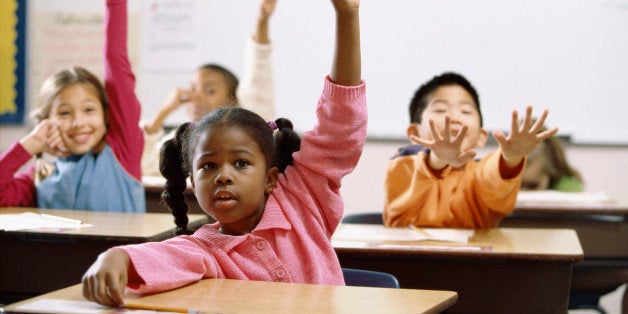
There is so much bad news about education these days that I decided to post a positive story about a class of students, most all minority, whom I observed at the Picasso sculpture exhibit at MOMA several weeks ago. The guest author of this blog, Sasha Silverstein, an art teacher at PS 302-303, in New York City, wrote the following description of the lesson she gave to these young learners prior to their visit to the Museum. This is followed by student responses to their experience at the exhibition. Not incidentally, the students were well-behaved, engaged and very responsive to what they saw.
\
I found the methods used by Ms Silverstein an example of "active learning" which I would only hope is being used as an effective learning approach in many other schools. Moreover, by using the arts as a medium of instruction for critical thinking, Ms. Silverstein demonstrates the positive reaction the students had to their visit at a time in which such programs are being cut back in order to expand "critical thinking" in other disciplines. I hope the irony of this attack on the arts should be self-evident.
ABSTRACTION OF A GUITAR, INFLUENCED BY PABLO PICASSO, BY THE THIRD GRADE
The third grade classes were taught by their classroom teachers and Ms. Silverstein about Picasso and his various periods and great career. In Art, we focused on Cubism, a period of art brought about by Picasso and another great artist, Braque. Cubism is about abstracting reality, what you see, into something else, including different sides, planes or angles (think of his faces with two eyes, yet the nose is on the side of the face, as if we are looking at the side and front of the face at once.) We add and subtract different shapes to make it into something new. NOT EASY!!!! Students learned to draw a real guitar, then an example of Picasso's Cubist guitars called "Maquette for Guitar," including different shades of gray (shading or value). Maquette means model. Then they drew ideas for their abstract guitar, in the "accordion"-style books.. (Get the connection...accordion??)
Next we went to see these sculptures in person at the Museum of Modern Art on a field trip! Students drew in another book there, copying Picasso's guitars, violins and mandolin. They answered questions such as: What are these sculptures made of? How do they stay together? and wrote other comments and questions they had.
Finally the artists started turning shoe boxes and other cardboard and recycled materials into abstract guitars!
Some needed paint, but most could just accept the neutral color of the cardboard. Details were added for strings and tuning knobs. Talk about high level thinking!!!!
Class #1 CONVERSATION ABOUT PICASSO'S CUBIST GUITARS
Student #1: It looks like a real guitar but not the whole thing.
Ms. S.: Yes, certain lines are suggested.
#2: It looks like the edges of the holes come out.
#3: He added lines and shapes that aren't there.
#4 I see overlapping.
#5 And shading.
#6: They are 3D.
#7 The design is beautiful.
Ms S. What [materials] will we need?
Class #2
Studenrt#1 cardboard
#2: tissue rolls
#3: tissue boxes
#4: rubber bands
#5: string
#6i tape (tan) masking
#7 scissors
#8 paint
Ms. S: So they are mostly recycled things.
Class#1 Discussion about Picasso's "Maquette for Guitar"
Student #1: It is realistic and abstract. It is not a real guitar, with real strings.
Student #2: it's like it is broken; there are no rectangles on the side of a real guitar.
Student #3: It is Cubist. The rectangle of the neck is curved. It doesn't have turning knobs. In the shapes, you can see part of the guitar, the back, front, sides.
Student #4: A real guitar is more curvy.
Student #5: The neck would be longer on a real guitar.
Student #6: The brown color is realistic.
Student #7: Maybe the materials are recycled. The strings could be of string or yarn. Cardboard would make a good abstract guitar.
Student #8 Maybe for the strings, we could use stretchy hairbands.
--Sasha Silverstein
www.sashasilverstein.com